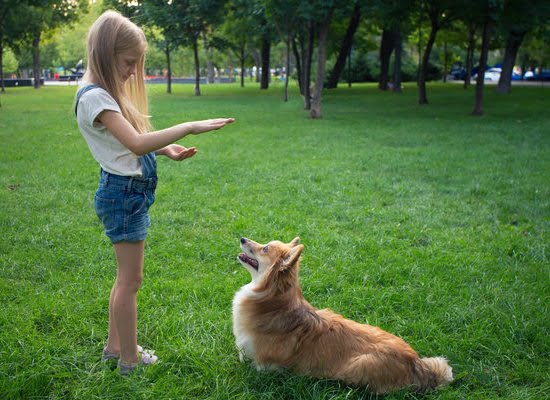Are you looking for the easiest dog to train? Training a dog is a crucial part of responsible pet ownership, and it offers numerous benefits for both the owner and the dog.
From improving behavior to enhancing communication, a well-trained dog can make all the difference in the relationship between pet and owner. In this article, we will explore the characteristics of the easiest dog to train, highlight specific breeds known for their trainability, delve into effective training methods, and share real-life success stories of owners who have successfully trained their easily trainable dogs.
Training a dog not only ensures good behavior but also strengthens the bond between the owner and their furry companion. Choosing an easily trainable dog breed can make this process much more enjoyable and rewarding. Understanding the traits and qualities that make certain breeds easier to train than others will help potential owners make an informed decision when selecting a new pet.
Whether you are considering getting a new puppy or struggling with training your current companion, this article will provide valuable insights into choosing and effectively training an easily trainable dog. We will discuss socialization, obedience training, common mistakes to avoid, and much more. By the end of this article, you will have a comprehensive understanding of how to approach training an easily trainable dog for a positive experience for both you and your pet.
Characteristics of the Easiest Dog to Train
When it comes to training a dog, the breed can play a significant role in how easily they can be trained. While every dog is an individual with its own personality and behavior, certain breeds are known for their trainability and ease of learning commands and tricks.
One key trait that makes some dogs easier to train is their intelligence. Highly intelligent breeds such as Border Collies, Poodles, and German Shepherds are quick learners and can easily pick up on commands and cues.
Another important characteristic of easily trainable dogs is their eagerness to please their owners. Breeds like Labrador Retrievers, Golden Retrievers, and Shetland Sheepdogs are known for their friendly and obedient nature, making them eager to learn new tasks in order to make their owners happy.
Additionally, a calm and attentive disposition is also a key quality in easily trainable dogs. Breeds like the Cavalier King Charles Spaniel and the Bichon Frise are known for being gentle, calm, and focused, making them receptive to training.
Furthermore, adaptability is another important characteristic that makes certain dog breeds easier to train. Dogs that are adaptable tend to be more open to new experiences and environments, which can make training more effective. Breeds like the Australian Shepherd and the Papillon are known for their adaptability, making them quick learners in various training situations.
| Characteristic | Example Breeds |
|---|---|
| Intelligence | Border Collie, Poodle, German Shepherd |
| Eagerness to Please | Labrador Retriever, Golden Retriever, Shetland Sheepdog |
| Adaptability | Australian Shepherd, Papillon |
Top 5 Easiest Dog Breeds to Train
When it comes to choosing a new furry family member, many potential dog owners consider the trainability of the breed. Some dog breeds are known for being easier to train than others, making the training process more enjoyable and successful. Here are the top 5 easiest dog breeds to train:
1. Labrador Retriever:
Labrador Retrievers are highly intelligent and eager to please, making them one of the easiest dog breeds to train. They are known for their friendly and outgoing nature, which makes them great companions as well as excellent candidates for obedience training.
2. German Shepherd:
German Shepherds are not only incredibly smart but also very loyal and protective. Their intelligence and willingness to work make them highly trainable, excelling in tasks such as obedience, agility, and even search and rescue.
3. Poodle:
Poodles come in three different sizes – standard, miniature, and toy – but all share the same high level of intelligence and trainability. They are quick learners and do well in various types of training, including obedience, tricks, and even some advanced activities like agility or scent work.
4. Border Collie:
Border Collies are known for their remarkable intelligence and exceptional problem-solving abilities. They thrive on mental stimulation and excel in various canine sports like herding trials or flyball due to their superior trainability.
5. Golden Retriever:
Golden Retrievers are not only affectionate family pets but also highly trainable dogs. Their friendly disposition and eagerness to learn make them suitable for obedience training as well as more advanced tasks such as therapy work or search-and-rescue operations.
When choosing a dog breed that is easy to train, keep in mind that each individual dog may have its own personality traits that can affect its trainability. It’s important to start training from an early age using positive reinforcement methods to ensure success with any breed you choose. With dedication, patience, and consistency, you’ll be able to unlock the full potential of your easily trainable companion.
Training Methods
When it comes to training easily trainable dog breeds, there are various methods and techniques that can be effective in shaping their behavior and teaching them new skills. One of the most popular and widely used training methods is positive reinforcement. This involves rewarding the dog with treats, praise, or toys when they exhibit the desired behavior or successfully perform a command. Positive reinforcement has been proven to be highly effective in motivating dogs to learn and obey commands.
Another effective training technique for easily trainable dog breeds is clicker training. This method uses a small device called a clicker to create a distinct sound that marks the precise moment when the dog performs the correct behavior.
The click sound is then followed by a reward, which helps the dog understand what specific action earned them the treat or praise. Clicker training is particularly useful for teaching complex tricks and behaviors, as it allows for clear communication between the trainer and the dog.
Furthermore, obedience classes can be beneficial for easily trainable dog breeds. These classes provide structured training sessions led by professional instructors who can help owners understand how to effectively communicate with their dogs and address any behavioral issues. Additionally, these classes offer opportunities for socialization, which is essential for well-behaved and obedient dogs.
| Training Method | Description |
|---|---|
| Positive Reinforcement | Rewards such as treats, praise, or toys are given to reinforce desired behaviors. |
| Clicker Training | Uses a clicker device to mark correct behaviors followed by rewards. |
| Obedience Classes | Structured training sessions led by professional instructors. |
Socialization and Obedience Training
When it comes to training a dog, socialization and obedience training are crucial aspects that contribute to the overall behavior and trainability of the animal. It is important for owners to understand the significance of these training components in ensuring that their dogs are well-behaved and easily trainable. Socialization helps dogs to adapt to various environments, people, and other animals, while obedience training teaches them how to follow commands and behave appropriately in different situations.
Benefits of Proper Socialization
- Helps prevent fear and aggression towards unfamiliar people and animals
- Promotes confidence in new environments and situations
- Reduces anxiety and stress in social settings
- Builds a strong bond between the dog and its owner
Importance of Obedience Training
- Establishes clear communication between the owner and the dog
- Promotes safety by ensuring that the dog responds to commands such as “sit,” “stay,” “come,” and “leave it”
- Fosters good manners and prevents destructive behavior
- Enhances the dog’s mental stimulation and problem-solving skills
For easily trainable dog breeds such as Labrador Retrievers, Golden Retrievers, and German Shepherds, proper socialization from an early age can significantly impact their adaptability to new experiences. Additionally, obedience training provides structure and guidance for these intelligent breeds, allowing them to excel in learning commands quickly. By prioritizing socialization and obedience training for easily trainable dogs, owners can cultivate well-rounded pets that are a joy to have as part of their families.
Case Studies
Training Success With Golden Retrievers
One popular easily trainable dog breed is the Golden Retriever. These dogs are known for their intelligence and eagerness to please, making them highly receptive to training. Many owners have shared their success stories of training their Golden Retrievers to perform a variety of tasks, from basic obedience commands to advanced tricks.
For example, one owner reported that their Golden Retriever quickly mastered the “sit,” “stay,” and “come” commands within a few weeks of consistent training sessions. Another owner shared how their Golden Retriever excelled in agility training and even earned ribbons in competitions. These real-life case studies demonstrate the potential for great success when training an easily trainable dog like the Golden Retriever.
Achieving Obedience With Border Collies
Another easily trainable dog breed is the Border Collie, known for its exceptional intelligence and strong work ethic. Owners of Border Collies have shared inspiring stories of successfully training their dogs in obedience and various tasks. One owner recounted how their Border Collie quickly learned complex obstacle course routines and became an impressive competitor in agility trials.
Additionally, many owners have praised the Border Collie for its responsiveness to commands and enthusiastic attitude towards learning new skills. These case studies serve as compelling evidence of the ease with which Border Collies can be trained, making them an excellent choice for individuals seeking a highly trainable canine companion.
Positive Results With Poodles
Poodles are often recognized as one of the easiest dog breeds to train due to their high intelligence and willingness to learn. Owners of Poodles have shared numerous success stories related to obedience training, trick-learning, and even service dog work. For instance, one owner described how their Poodle quickly grasped advanced commands such as fetching specific items by name and assisting with household chores.
Another owner highlighted their Poodle’s exceptional aptitude for learning tricks like rolling over, spinning in circles, and even performing backflips on command. These real-life examples illustrate the impressive trainable nature of Poodles and showcase the potential for achieving remarkable results through consistent and positive training methods.
Overall, these case studies demonstrate that choosing an easily trainable dog breed has distinct advantages when it comes to successful training outcomes. Through dedication, patience, and effective techniques tailored to each dog’s individual characteristics, owners can achieve remarkable results in shaping well-behaved and skilled canine companions.
Common Mistakes to Avoid
Using Punishment-Based Methods
One of the most common mistakes that dog owners make when training their pets is resorting to punishment-based methods. While it may seem like a quick solution to correcting unwanted behavior, using aversive techniques such as yelling, physical punishment, or shock collars can actually be counterproductive.
Instead of fostering a positive and trusting bond with your dog, these methods can lead to fear and anxiety, ultimately hindering the training process. It’s important for owners to understand that positive reinforcement and reward-based training are much more effective in promoting desirable behaviors in easily trainable dogs.
Being Inconsistent With Commands
Consistency is key when it comes to training any dog, especially those that are easier to train. One common mistake that owners make is being inconsistent with the commands they use or the rules they enforce.
Dogs thrive on routine and clear expectations, so inconsistency can confuse them and make it harder for them to understand what is expected of them. To avoid this mistake, it’s important for owners to establish consistent training routines, use the same cues for specific behaviors, and enforce rules consistently across all family members.
Neglecting Socialization
Another mistake that owners of easily trainable dogs may make is neglecting the importance of socialization. While these breeds may pick up commands quickly, socialization is equally crucial for their overall behavioral development. Dogs that are not properly socialized may exhibit fearfulness, aggression, or anxiety in unfamiliar situations or around other people and animals.
To avoid this mistake, owners should expose their easily trainable dogs to a variety of experiences, environments, and interactions with different people and animals from an early age. This will help them grow into well-adjusted and confident companions who respond positively during training sessions.
Conclusion
In conclusion, choosing the easiest dog to train can make a world of difference in the training experience for both the owner and the dog. The characteristics of an easily trainable dog, such as intelligence, eagerness to please, and adaptability, contribute to a smoother and more successful training process. By selecting a breed known for its trainability, owners can set themselves and their furry companions up for a positive and rewarding learning journey.
The top 5 easiest dog breeds to train, including Border Collies, German Shepherds, Poodles, Golden Retrievers, and Labrador Retrievers, possess the qualities that make them highly receptive to learning commands and tricks. Their intelligence and willingness to cooperate make them ideal candidates for obedience training as well as advanced skill-building activities. Incorporating positive reinforcement techniques and consistency in training can further enhance the bond between owner and dog while achieving remarkable results.
Furthermore, socialization and obedience training play crucial roles in shaping a well-behaved dog. By exposing easily trainable dogs to various environments, people, and other animals at an early age, owners can foster good behavior and prevent behavioral issues later on.
Obedience training builds upon socialization by establishing clear boundaries and expectations for the dog to follow. In doing so, owners can nurture a harmonious relationship with their pets while reaping the many benefits of having chosen the easiest dog to train.
Frequently Asked Questions
What Breed of Dogs Is the Easiest to Train?
The breed of dogs that is considered the easiest to train is the Border Collie. Known for their intelligence and eagerness to learn, Border Collies excel in obedience training, agility, and other dog sports.
What Is the Hardest Dog to Train?
On the other hand, the Afghan Hound is often considered one of the hardest dogs to train. Their independent nature and aloof personality can make them quite stubborn and uninterested in following commands.
Which Is the Easiest Dog to Own?
When it comes to ease of ownership, many people consider Labrador Retrievers to be the easiest dogs to own. They are friendly, adaptable, and generally good with families and children. Additionally, Labs are relatively low maintenance in terms of grooming and exercise needs.

Welcome to the blog! I am a professional dog trainer and have been working with dogs for many years. In this blog, I will be discussing various topics related to dog training, including tips, tricks, and advice. I hope you find this information helpful and informative. Thanks for reading!





